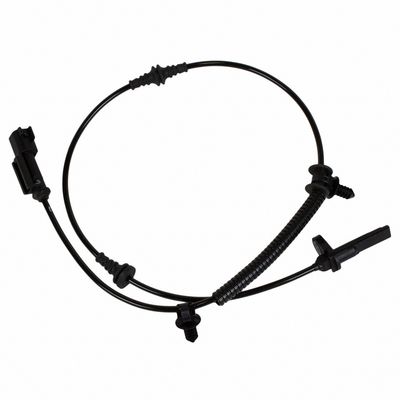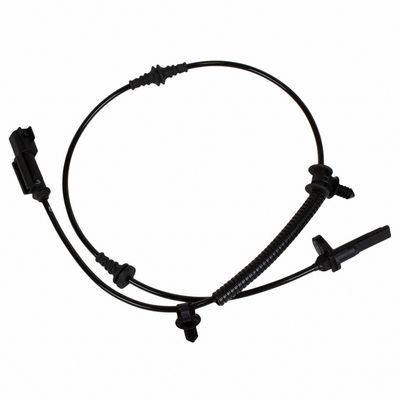Answer
Aug 15, 2024 - 07:45 AM
The Motorcraft BRAB-404 ABS Wheel Speed Sensor outputs a signal that corresponds to the rotational speed of a vehicle's wheel. Specifically, it typically produces one of the following types of signals:
1. Analog Signal (AC Voltage):- In some systems, the ABS wheel speed sensor generates an analog AC (alternating current) voltage signal. This signal's frequency and amplitude increase with the wheel's rotational speed. The faster the wheel turns, the higher the frequency and voltage of the signal.
- In modern systems, the ABS wheel speed sensor often produces a digital square wave signal. This is generated as the sensor detects the passage of teeth on a tone ring (a toothed wheel attached to the axle or hub). Each passing tooth triggers a change in the signal, creating a series of pulses. The pulse rate increases with wheel speed, providing the ABS control module with precise data on how fast each wheel is rotating.
-
Signal Processing: The ABS control module (or ECU) receives the signal from the sensor. It monitors the frequency (or pulse rate) of this signal to determine the speed of each wheel.
-
ABS Operation: If the module detects a significant difference in wheel speeds (indicating potential wheel lock-up during braking), it adjusts the brake pressure to the affected wheels to prevent skidding and maintain control of the vehicle.
-
Traction Control and Stability Systems: The output from the ABS wheel speed sensor is also used by traction control and electronic stability control systems to manage wheel slip and vehicle stability.
The Motorcraft BRAB-404 ABS Wheel Speed Sensor outputs a signal (either analog or digital) that reflects the wheel's rotational speed. This information is crucial for the vehicle's ABS, traction control, and stability control systems to function correctly.





Add New Comment